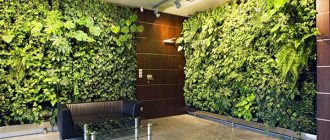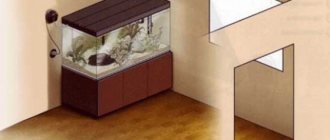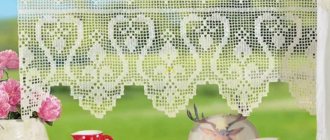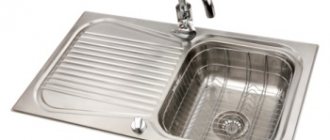Hello, friends! Today is a very interesting topic about hedges. In this article we will look at the best plants for a green fence, look at the most interesting options for hedges, and learn how to properly create fences from plants and care for them.
What is a hedge? This is a dense planting of trees or shrubs in one line. It performs two functions: decorative and security, and has its advantages and disadvantages. Hedging is an art that originated in ancient Persia. Let's look at the advantages and disadvantages of this type of fencing.
Benefits of a hedge
- Of course, a living fence is pleasing to the eye;
- Has a good effect on the human nervous system and health;
- Creates individuality and a sense of harmony;
- Increases the level of oxygen and essential oils in space;
- Its appearance can be changed;
- It protects well from dust, wind and can serve as a soundproofing screen;
- Attracts birds to the site, which in turn eat pests in the garden;
- It is created once and for a very long time (sometimes for several generations);
- Does not require any money for repairs.
Flaws
I was able to find 3 disadvantages of a living fence.
- For a living fence to begin to fulfill its function, it needs to grow and this takes time, in most cases from several years;
- If the hedge is created from bushes, care and pruning are necessary;
- If for some reason some plants from the fence line die, this problem cannot be solved quickly.
Hedges are made single-row and double-row. Single-row ones are created from bushes that form a dense impenetrable wall. Double rows come in different options and depend on the area of the plot. For example, the outer row may be made of thorny bushes, and the inner row of trees, which cannot, in terms of density, provide an impassable area. The outer row can serve for protection, and the inner row can consist of fruit or berry bushes and trees.
How easy is it to grow a beautiful hedge?
A hedge is, first of all, a wonderful decoration for your country house. But before the hedge becomes large and beautiful, several years must pass. If you shave climbing plants, the result will be the next year.
Advantages and disadvantages
Climbing plants have many advantages:
- grow quickly;
- will cover an ugly or featureless section of the wall;
- vines have the same properties as hedges;
- the best option for small areas;
- do not take up much space;
- they are well suited for creating decorative hedges in hard-to-reach corners of the garden, where planting ordinary shrubs is impossible.
But they have one single disadvantage:
- their leaves fall off in winter. All the imperfections that were covered by plants in spring and summer appear again.
Today, finding a suitable climbing plant is not difficult. Thanks to the wide variety of such plants, you can easily find a suitable variety that will suit your garden in all respects.
When choosing a climbing plant, you need to rely on the type of soil and how the light will fall on the plant. The type and size of your hedge are also important.
Plant options
There are a large number of plants from which you can form beautiful, fast-growing hedges. To make a choice, you should take into account the desired height and density of planting, the duration of the growing season, growth rate, and decorative characteristics. Below are descriptions of popular types, divided into categories.
Shrubs
Shrubs are well suited for creating medium-height, fast-growing hedges. They grow quite quickly, form numerous branches and can form a dense wall. Some species have fragrant flowers that fill the area with pleasant odors. There are many varieties of thorns that will provide protection from unauthorized entry from the outside.
Bladderwort viburnum
This shrub is unpretentious, but at the same time has good decorative characteristics. The height of the bush is average (about 2 meters), the crown is rounded and quite lush, the leaves have carved edges and are painted purple, golden or red.
The plant prefers good light, but also grows in shaded areas. The shrub is not picky about soil, but does not tolerate the presence of lime. Watering is moderate, waterlogging is destructive. The bladderwort does not suffer from car exhaust and dust, and does not require shelter for the winter. To form a beautiful living hedge, trim the top and regularly cut off the side shoots.
Turn
The thorn reaches a height of three meters, thanks to its lush foliage it can form a dense, almost impassable hedge. Regular and frequent pruning is not needed; the bushes grow compactly and neatly. During the flowering period, the thorn pleases with numerous beautiful flowers, which are replaced by edible and healthy fruits (a pleasant taste appears after frost).
To speed up the process of forming a hedge after planting, the bushes can be pruned to 15 cm in the first year. Next year, pruning is carried out again; in the future, you need to maintain the desired height.
Barberry
Barberry is suitable for creating a dense and neat hedge, it is not picky about the composition of the soil, it tolerates drought, but does not tolerate waterlogging of the soil and stagnation of water in it. There are both tall and low-growing varieties, which allows you to choose the desired planting height.
Barberry is covered with numerous flowers, followed by edible fruits that are suitable for making jam. The hedge will be dense if you increase the number of bushes. Pruning should be done after flowering and before autumn.
Dogwood
Dogwood on the site can be planted near the fence in the shade; it does not require bright lighting. The bushes have beautiful leaves and numerous flowers. The plant reaches a height of 3-4 meters. The fruits are edible and have beneficial properties.
Planting is carried out in early summer or late spring after the soil has warmed up. Planting is possible in the fall, but before the onset of cold weather. Autumn shoots are covered for the winter.
Evergreens
Evergreens will delight you with their beauty all year round, despite the cold and temperature changes. They are easy to care for and look aesthetically pleasing, although you won’t see any flowers.
Thuja
Thuja looks elegant and bright, suitable for forming year-round plantings. The plant can tolerate strong gusty winds and low temperatures. To plant thuja, choose a well-lit place, but remember that direct rays can cause foliage burns. To stimulate branching and form a lush crown, prune regularly.
Juniper
There are various varieties that are suitable for group plantings and have excellent decorative properties. The crowns are low, have a cone-shaped or pyramidal original shape, and as they grow, they become spreading and lush. Big plus: the bark does not rot.
climbing plants
Climbing plants are rapidly developing and decorate fences, but are usually used to decorate existing permanent fences. These species wrap around a support and protect from prying eyes, but do not grow on their own and are unlikely to keep uninvited guests away.
climbing roses
Climbing roses have thorns that will scare away thieves and strange animals. They are beautiful and fill the garden area with a stunning aroma and have beautiful flowers of different shades.
Climbing roses do not tolerate stagnant water and are planted in areas where groundwater runs no higher than two meters. The laying takes place at the end of September or the beginning of October, but the shape is given from the second year. Horizontal and vertical garters are used.
Honeysuckle
Honeysuckle has lush and fairly tall bushes that can be planted on any soil in shaded areas. Decorative characteristics are maintained throughout the growing and flowering periods. The fruits can be eaten.
If you use several varieties, you can get a multi-colored, bright living fence. In the first five to seven years, regular pruning is carried out, but the crown is formed later.
Clematis
Clematis look attractive throughout the warm season and are relevant in 2020. Bushes older than two years are planted in autumn in open, well-lit areas. Care is required, which involves protecting the roots from overheating by mulching, moderate watering and proper fertilizing without manure and peat. The soil is not acidic.
Stimulate abundant flowering with regular pruning. During the winter, be sure to cover the plantings to protect the rhizomes from freezing.
Trees
Trees grow longer than shrubs, but form reliable, strong hedges that are wind-resistant and form living fences.
Eucalyptus
Eucalyptus can be called the fastest growing tree plant. Popular and unpretentious varieties are lemon and few-flowered varieties and Gunny, which can withstand droughts and grow in different soils.
Moderate watering is required, but do not allow the soil to dry out completely. The height of green fences can be easily adjusted using trimmings. During the winter period, plantings are covered.
Willow
Willow grows quickly and in different soils, is unpretentious and does not require complex care. Low or mid-height fences are formed from dwarf and low-growing varieties such as goat willow or purple willow.
Willow is moisture-loving, so it is advisable to supplement watering with foliage sprays. Mature plants are pruned in summer and autumn.
Aspen
Aspen takes root in different soils; young shoots no older than one year are used to create hedges. If you intertwine the branches together, you can make a dense, almost solid living fence. Maintenance is simple, and the height is regulated by cuttings (when cut, lateral shoots appear). Boletus mushrooms grow under the trees after the rains.
A living, fast-growing hedge is beautiful and aesthetically pleasing.
By forming it correctly, you will receive a living fence, protection of the site from prying eyes, sun and wind, as well as an original addition to the landscape design. Share with your friends! Click the social media buttons!
What type of plant should I take?
Often the plant variety depends on the location where it will be located:
- in an open place - frost-resistant plants.
- next to doors, arches, etc. – vines or plants that acquire color in autumn.
- near the wall there are special varieties of creeping vines that grow upward over time.
Hedge in the country for 1 year
If you only want to decorate your garden with hedges for one year, then use fast-growing plants that will only live for one year. The most famous plants in this regard are beans, dolichos, thunbergia, and nasturtium.
Requirements for plants
Plants used for formation must meet certain requirements:
- Unpretentiousness will allow minimal interference in the formation.
- If you live in the middle zone in a region with pronounced seasonality, choose frost-resistant plants that can withstand temperature fluctuations.
- Possibility of forming lush foliage and a dense green wall. Otherwise, the fast-growing hedge will look unattractive and will not be able to perform its functions.
- Durability. If you are not ready to plant plants annually, choose perennial varieties.
- Long growing season and flowering period. Choose species that begin to form buds early and shed their leaves late in the fall.
Planting a hedge
Before planting climbing plants, you need to thoroughly prepare the area where the plant will live. Patch all the cracks and treat the metal. Each surface should be ready to support an unpretentious hedge.
We recommend purchasing climbing plants in special containers. The roots of such plants are not damaged and are already slightly developed, thanks to which they will quickly take root. It is necessary to plant plants in special planting holes (about 50 centimeters deep).
Such pits are filled with earth, compost and humus. Plants need to be planted 10 centimeters deeper than they grew in the flowerpot. Immediately after planting, you need to water the soil.
A young hedge in a country house requires constant care. The soil around the plant should not be dry. Before the end of the summer season, you should fill up a little soil around the plant. This way the roots of the hedge will not freeze.
If the plant gets in the way or obscures a beautiful view, it can be tied with a ribbon. We hope your hedges are gorgeous! See the photo of the hedge below:
Garden crops for decorative hedges
There are several separate gradations of decorative growing plantings. The main difference between the species is the final height that the crop reaches. When buying seedlings, you need to choose varieties that grow exactly the right height, otherwise there is a risk of getting a slightly inappropriate green wall along with small hedges.
- Low-growing crops are popular if there is a need to isolate a small flower bed or highlight paths. They are planted with low-growing dense shrubs, or such crops that grow freely, throwing out short young shoots. These plantings are below seventy centimeters in height.
- Plants of medium height complement existing plantings, also fencing tall flower beds (for example, roses), decorate existing unsightly fences, and perform a protective function. The average size is about one and a half meters.
- Tall hedges sometimes completely replace a permanent fence. Ate, thuja. Poplars and most coniferous trees, planted in several rows or in a checkerboard pattern, form an impenetrable, impassable living wall. Such plantings occur together or separately on stationary fences.
- Several tiers are the most interesting, difficult to implement option for garden zoning. The first row is taller plants, then lower ones, the last is the lowest. The difficulty of this moment is the choice of plants that are ideally suited in appearance, identical to the technologies of planting, watering, care, and complementary feeding. It is important to correctly calculate the height of the crops, because if one row is too high, you will get an awkward picture. The most important thing is to select plants that love the same soil and the same type of fertilizing.
Rowing also plays a very important role in determining how impassable the result will be. It is important to understand that planting in several rows is much more difficult than just one.
- Single-row plantings are the simplest and, accordingly, the most popular. One large trench is dug, first filled with a drainage element (small crushed stone, expanded clay), you can fill in a little sand. Next comes soil mixed with fertilizers. The seedlings are planted as evenly as possible, the planting angle is ninety degrees, otherwise the crowns will eventually meet at the top, become strongly intertwined, and interfere with joint growth. After level installation, the seedlings are covered with soil and trampled down a little. Be sure to add mulch on top: old tree bark, sawdust, fine gravel.
- Checkerboard order - seedlings planted diagonally. This type of planting allows you to close empty spaces between trees, so this type is very common. To properly perform planting, it is worth understanding how widely the plant will grow. It is always easier to manage bush species, the branches of which have a basal base, coming directly from the roots. Separate holes are dug and trenches are filled in the manner described above. The distance between the seedlings is approximately fifty centimeters; this length is enough for the crowns to fit tightly.
- The two-row type is more complex and costly. Twice as many seedlings will be required, but these inconveniences are fully justified by the result. A hedge planted in two rows looks much better, denser than an ordinary single-row one. This type of planting is most typical for large areas, children's camps, specialized park areas, or fundamental replacement of fences. It is worth noting the large amount of space required, labor costs, and twice as many seedlings. You will have to dig two separate trenches, taking into account the lateral distance from all possible sides.
- Three-four-row types are considered extremely rarely by landscape designers. It is impractical to line up incredible, identically aligned trees. To make a living wall look denser, it is much more convenient to select the appropriate types of trees and shrubs than to take away the useful area of the garden by sowing large trenches.
https://www.youtube.com/watch?v=wapq1YsbqRM&ab_channel
Of course, the first step is to choose the right plants. It is especially important for inexperienced gardeners to give preference to varieties that are the most unpretentious. Therefore, most summer residents who are planning to plant a green fence choose crops that are easy to plant, easy to feed, and can be cut infrequently. In other words, inexpensive plants are much more preferable than complex varieties. Among the plantings, the most popular types are distinguished.
- Summer cottage, garden area - places associated with fruit and berry crops. Many people harvest their own crops in the summer, so if the green hedge bears additional fruit, the task is doubly successful. The most suitable shrubs that annually bear delicious berries from raspberries, currants, and gooseberries.
- The most decorative bushes planted in dense plantings are lilac, red viburnum, and honeysuckle. These plants produce beautiful large lush inflorescences that smell good.
- Most of the green walls require constant pruning, some require detailed shaping. Therefore, bushes that grow freely are the most popular. Some crops simply require pruning, otherwise growth will be poor or the plant will die. However, rosehip and snowberry grow separately and look quite presentable without any pruning. Free-growing bushes look more natural than molded ones.
- Elderberry is perfect if you need to block unsightly household buildings, such as a septic tank, a pit, a compost collection area, an old barn, or other unsightly, unsightly buildings that spoil the overall design of the garden. An additional benefit of the shrub is that it repels flies with its natural scent.
- Border edges - mini hedges - frame paths, benches, pools, in a word, they highlight objects that need to be emphasized. You can choose special very low-growing crops, or constantly cut the height below average. The first option is much more preferable.
The main rule that must be clearly understood is that plants must be taken of the same type, age, level of development, and vegetative development. There are different crops that differ, for example, in their growth rate.
- Fast-growing varieties are often represented by vines, various herbal crops, beautiful, luxuriantly blooming. The advantages of such plantings are that the necessary growth restriction is provided by an artificially built fence. The loaches climb higher on their own, without any garters, simplifying the care process. Among such plants there are a lot of annuals, such as decorative beans and annual peas. It’s as if a fence collected with flowers will not last long, but will greatly please its owners for one season.
- Fast-growing bushes require a lot of attention, constant pruning and shaping. It is these procedures that ensure maximum splendor and good growth of new shoots. Some species need to be pruned more than three times a month. Some of the best-chosen fast-growing species require similar attention.
Barberry has a pleasant aroma, blooms beautifully, and its berries have a decorative, beautiful appearance. The foliage is bright green in summer, reddish in winter. Frost-resistant, gets along well with other shrubs.
Sharp, sometimes reaching seven centimeters, slightly brown thorns of hawthorn form an almost impenetrable barrier to uninvited guests. In addition to its defensive qualities, beautiful flowering and pleasant foliage create an incredibly attractive decorative planting.
The beneficial properties of rose hips have been known for a long time. Many gardeners still prefer to plant such a successful specimen, receiving, in addition to useful berries, an incredibly rich, dense crown of a hedge that covers the garden plot. Delicate red flowers delight in the spring, medicinal fruits are collected in late autumn. Quite large, frequent spines serve a defensive function.
A tall, stately thorn will reliably close the yard. It grows very strongly, a densely growing plant. Thanks to the thorns, it perfectly serves as an external fence. Three years after planting it bears fruit.
The lush crown of cotoneaster covers the yard, enclosing it with a reliable green wall. It grows in a large five-meter planting, the crown is dense and has a slightly rounded shape. It tolerates shady planting sites well and produces edible berries in the fall.
The white, spreading clusters of spirea are widely known to most gardeners. It grows about five meters in height, has a very interesting color of slightly elongated dense leaves.
- Fast-growing trees are most attractive to owners of summer cottages who want to plant an impenetrable wall, fence themselves off with green columns of beautiful crowns. Most trees require careful maintenance. The most important type of maintenance is molding. If you “let go” young shoots, they often grow uncontrollably, giving an ugly, unkempt, and sometimes even neglected appearance.
thujas . They differ in appearance, size, crown density, even shapes. It loves to be trimmed and forms beautifully, forming beautiful ensembles of living fences.
Firs are similarly multi-varied. The ideal tree is one that can withstand a sharply continental climate: dry summers, slushy autumns, frosty winters. Every year they require good comprehensive feeding, a good haircut, and weekly watering. After competent, high-quality planting, it stretches out on its own for a long time, requiring minimal investment.
Juniper grows large and fluffy. The branches have healing properties. Special healing infusions are often made. Many varieties will allow you to choose a tree that is ideal for a given area.
Sea buckthorn is a deciduous plant that requires constant good pruning. It grows in a large, six-meter column, so sea buckthorn seedlings planted in a checkerboard pattern will very soon create the necessary impenetrable fence.
Beautiful maple are loved almost everywhere. The unusual shape, stately appearance, and beautiful whitish bark give the maple an incredibly memorable image. Very unpretentious, requires pruning, otherwise it grows into a forty-meter giant.
Rowan is a symbol of the forests of central Russia. It bears fruit with beautiful red berries, reaching their brightest color in winter. Tolerates dry weather and harsh winters, blooms beautifully in spring.
Birch is a Russian beauty. It has a slightly overhanging crown shape, similar to willow, but is more straightened. The birch trunk is black and white, the most popular tree bark. Gives a healthy juice that you can drink. Frost-resistant, does not require additional pruning.
Willow loves moisture. Shorelines are often lined with willows. The beautiful crown falling down is also a striking representative of truly Russian vegetation. There are bush varieties of willow that also make excellent decorative hedges.











